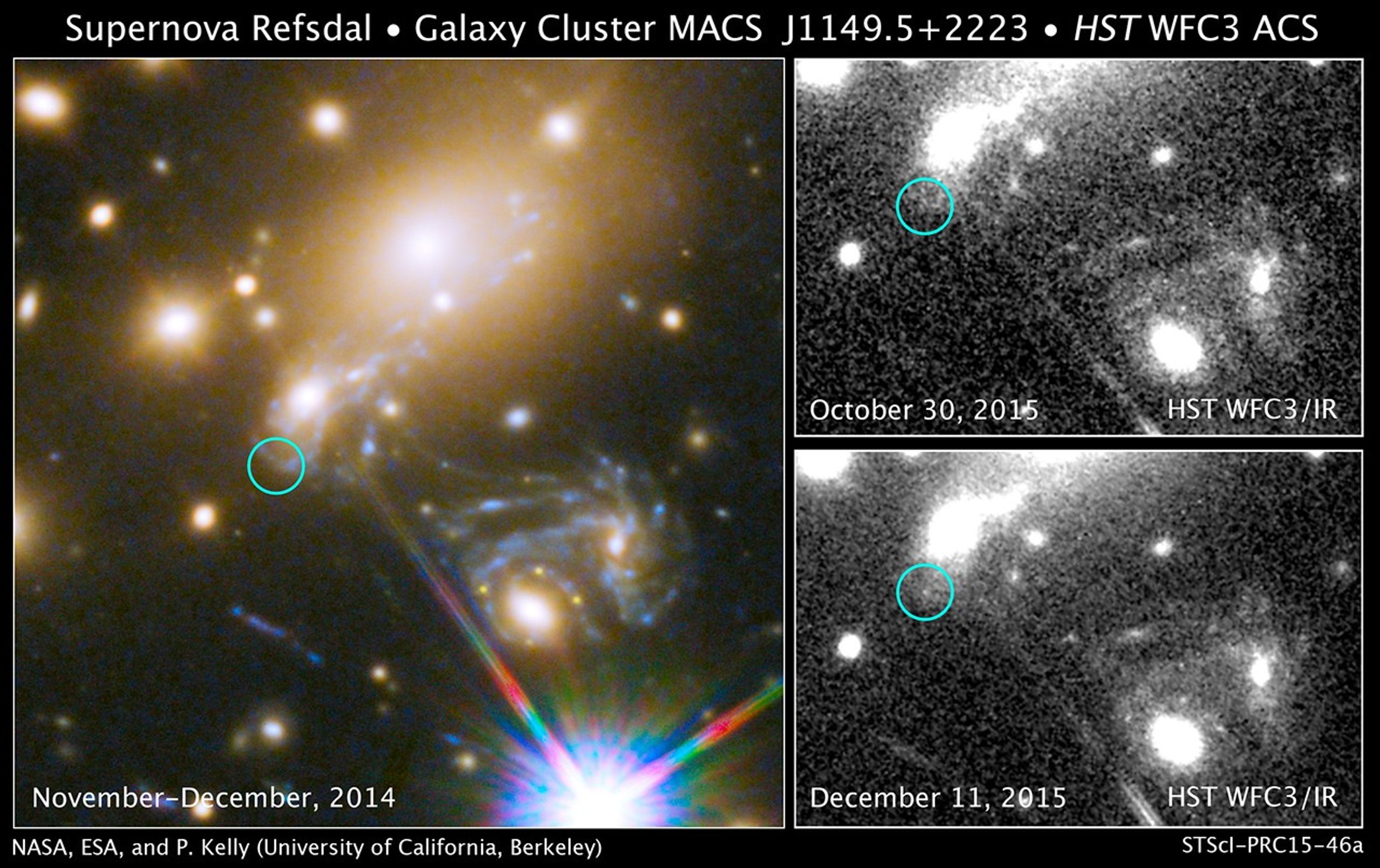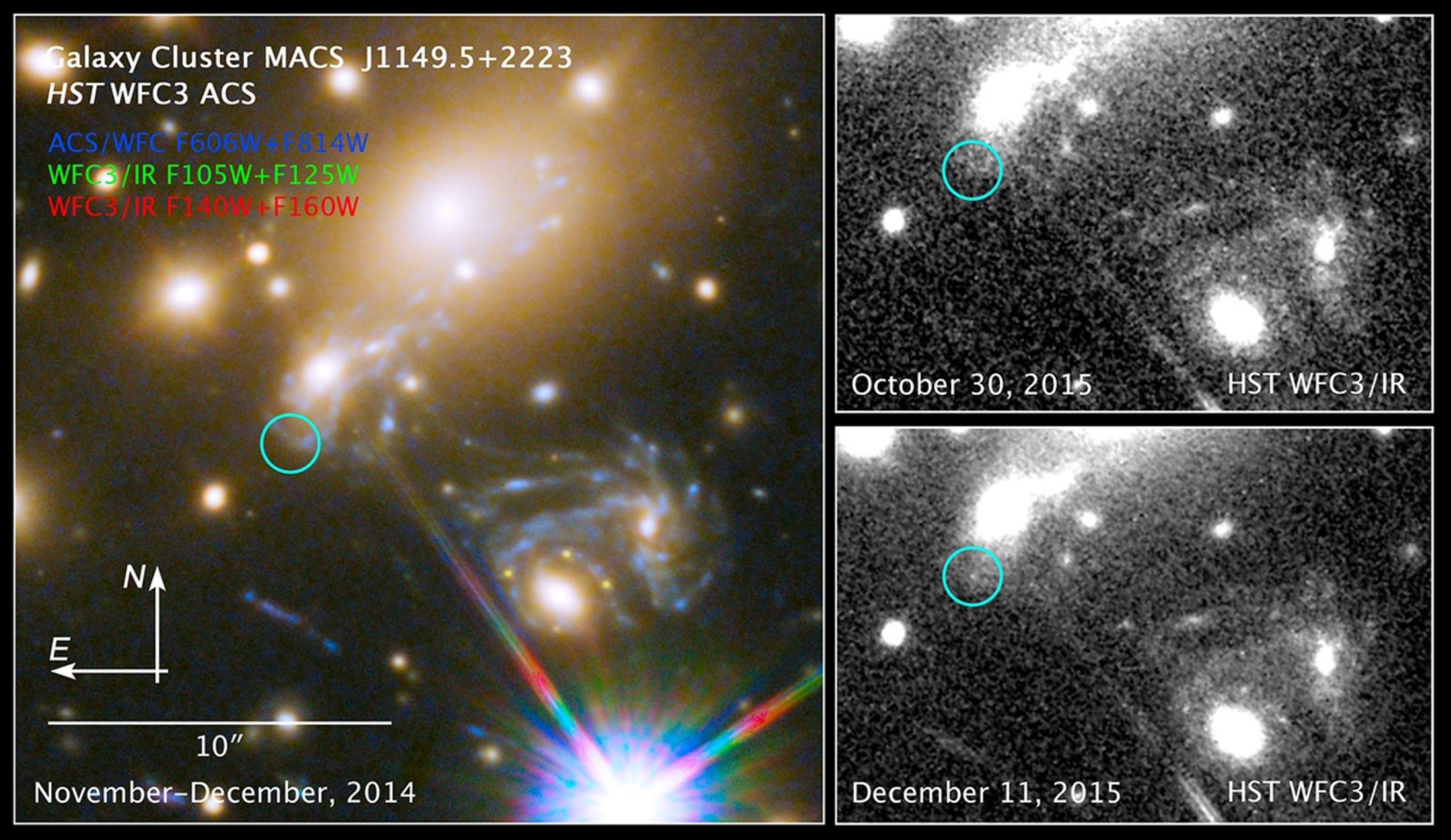1 min read
Supernova Refsdal (Oct. 30, 2014 — Not Detected)

About the Object
- R.A. PositionR.A. PositionRight ascension – analogous to longitude – is one component of an object's position.11h 49m 35.08s
- Dec. PositionDec. PositionDeclination – analogous to latitude – is one component of an object's position.22° 24' 10.94"
- ConstellationConstellationOne of 88 recognized regions of the celestial sphere in which the object appears.Leo
- DistanceDistanceThe physical distance from Earth to the astronomical object. Distances within our solar system are usually measured in Astronomical Units (AU). Distances between stars are usually measured in light-years. Interstellar distances can also be measured in parsecs.5 billion light-years or 1.5 billion parsecs (cluster)
About the Data
- Data DescriptionData DescriptionProposal: A description of the observations, their scientific justification, and the links to the data available in the science archive.
Science Team: The astronomers who planned the observations and analyzed the data. "PI" refers to the Principal Investigator.This black and white image was created from data from HST proposal 14199 PI: P. Kelly (UC Berkeley) et al.
The science team includes: P. Kelly (UC Berkeley), S. Rodney (University of South Carolina), G. Brammer (STScI), L. Strolger (STScI/WKU), R. Foley (University of Illinois at Urbana-Champaign), T. Treu (UCLA), A. Zitrin (Caltech), A. Filippenko (UC Berkeley), S. Jha (Rutgers University), A. Riess (JHU/STScI), J. Hjorth (Dark Cosmology Centre, Copenhagen), K. Schmidt (UC Santa Barbara), O. Graur (NYU/AMNH), M. Bradac (UC Davis), B. Weiner (Steward Observatory/UA), A. von der Linden (Dark Cosmology Centre, Copenhagen/KIPAC, Stanford), C. McCully (LCOGT/UC Santa Barbara), A. Molino (IAA-CSIC), J. Selsing (Dark Cosmology Centre, Copenhagen), M. Nonino (IAG/USP), and D. Coe (STScI). - InstrumentInstrumentThe science instrument used to produce the data.HST>WFC3/IR
- Exposure DatesExposure DatesThe date(s) that the telescope made its observations and the total exposure time.October 30, 2015 (non-detection)
- FiltersFiltersThe camera filters that were used in the science observations.F125W and F160W
- Object NameObject NameA name or catalog number that astronomers use to identify an astronomical object.SN Refsdal
- Release DateDecember 16, 2015
- Science ReleaseCaught in the Act: Hubble Captures First-Ever Predicted Exploding Star
- Credit

Grayscale: F125W + 160W

Related Images & Videos

Supernova Refsdal and Galaxy Cluster MACS J1149.5+2223
This image composite shows the search for the supernova nicknamed Refsdal using NASA's Hubble Space Telescope. The image to the left shows a part of the deep-field observation of the galaxy cluster MACS J1149.5+2223 from the Frontier Fields program. The circle indicates the...
Share
Details
Claire Andreoli
NASA’s Goddard Space Flight Center
Greenbelt, Maryland
claire.andreoli@nasa.gov































